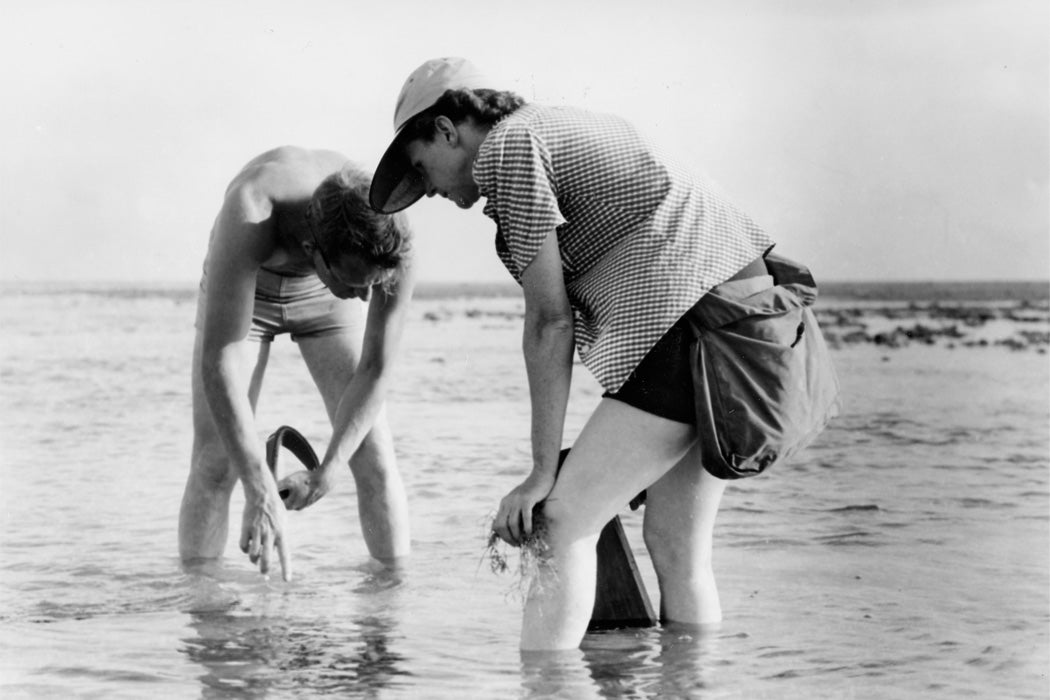When Rachel Carson’s Silent Spring came out in 1962, many Americans were horrified to learn about the dangers to humans and other life posed by pesticides. Critics quickly pushed back, and, as environmental historian Maril Hazlett writes, they did so in tremendously gendered terms, depicting Carson and the women who were moved by her messages as over-emotional and irrational.
Carson, a biologist by training, made the case against the pest-control methods used at the time. Her book presented the relationship between humans and nature in a groundbreaking way. Hazlett notes that many readers cited a passage describing how the same man-made chemicals were found in “fish in remote mountain lakes, in earthworms burrowing in soil… in the mother’s milk, and probably in the tissues of the unborn child.” Given such immense complexity, Carson pointed out that contemporary scientific knowledge was far too limited to justify enormous chemical interventions in the natural world.
Some scientists embraced Carson’s notion that the public must be included in evaluations of ecological dangers, which had previously been limited to industrial and agricultural representatives and government officials.
But other scientists, along with industry representatives, government personnel, and segments of the media, pushed back with a vengeance. A review in Time accused Carson of being “hysterically overemphatic” with a “mystical attachment to the balance of nature.” A cover illustration for the industry magazine Farm Chemicals depicted a witch on a broomstick, clearly referring to Carson. Dr. Robert Metcalf, vice-chancellor of the University of California at Riverside, asked whether “we are going to progress logically and scientifically upward, or whether we are going to drift back to the dark ages where witchcraft and witches reign.”

A cartoon in the Des Moines Register titled “Backyard Battle” made the gendered aspect of the debate clear. A male scientist brandishes a can of bug spray against an imposing woman in a housedress, who wears a gas mask and carries a paper titled “The dangers of poison sprays.”
But Hazlett writes that many men—particularly those identifying as outdoorsmen—supported Carson’s message. In contrast to the idea of masculinity as a rational mindset elevating technological progress, they embraced a view of man as hunter, fisher, and adventurer, deeply embedded in his natural environment.
Once a Week
Outdoorsmen, after all, had long been supporters of setting aside wildlife areas for conservation. Now, many of them connected that concern with a more comprehensive ecological view. These men immediately grasped Carson’s message because of the way it tied in to their own observations. Men in rural areas described “dead” rivers and the destruction of wildlife by aerial DDT sprayings. “Mark Trail,” the distinctly masculine comic strip created by national parks guide Ed Dodd, warned that “when man indiscriminately broadcasts chemical insecticides and nuclear wastes in his environment… He seriously threatens the future of ALL living things including himself!”
For men and women alike, Carson created a framework for understanding something many had begun to believe intuitively: that industry-backed technology was moving faster than scientific understanding of its effects, to potentially disastrous results.







